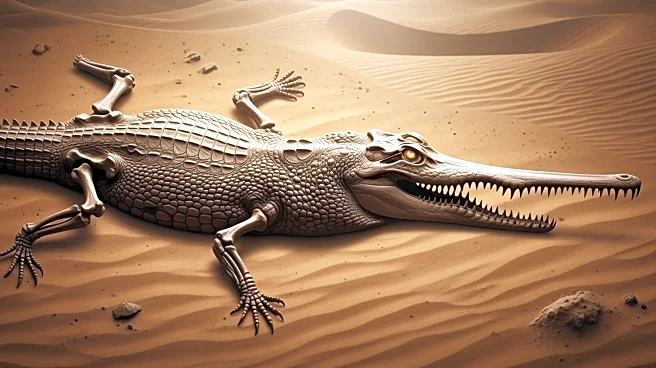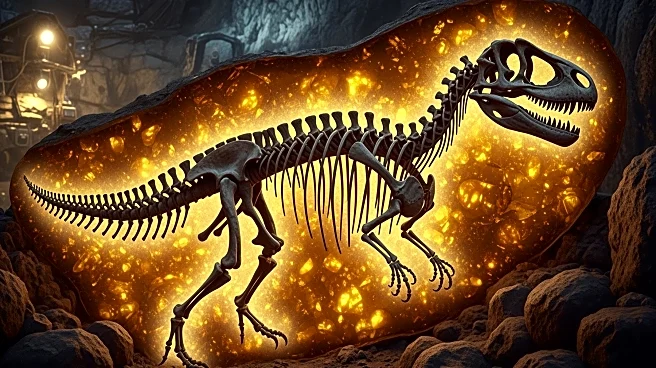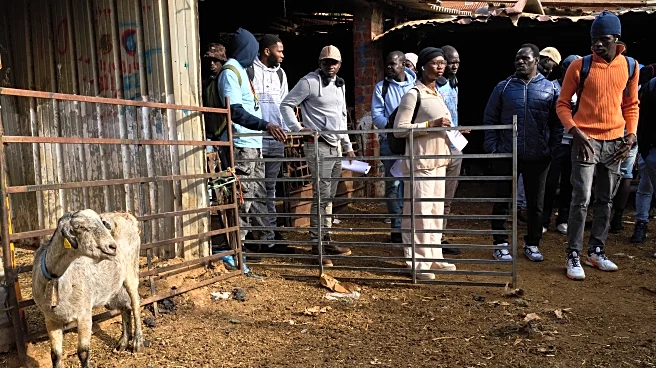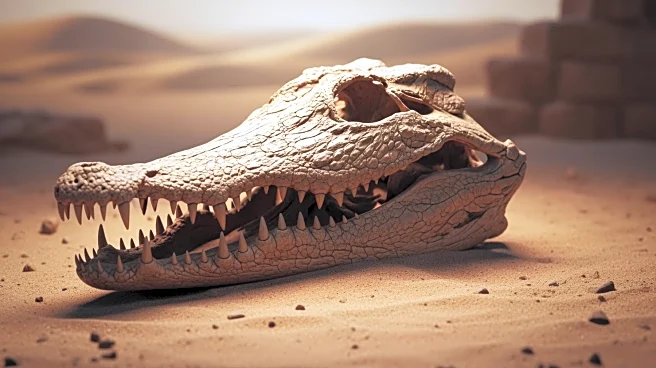What's Happening?
Paleontologists in Egypt have uncovered a significant fossil in the Western Desert, revealing a new species of ancient crocodile named Wadisuchus kassabi. This species, dating back approximately 80 million years, is identified as the earliest known member
of the Dyrosauridae family. Unlike modern crocodiles, dyrosaurids thrived in marine environments with elongated snouts and sharp teeth, adapted for catching slippery prey. The discovery, published in the Zoological Journal of the Linnean Society, was led by Egyptian researchers and highlights the evolutionary adaptations of these ancient reptiles. The fossils, including partial skulls and snout tips, were found near Kharga and Baris oases, providing insights into the development of dyrosaurids.
Why It's Important?
This discovery is crucial for understanding the evolutionary history of crocodiles, particularly the Dyrosauridae family. It suggests that Africa was the origin of this group, with their diversification beginning earlier than previously thought. The findings also emphasize the rich paleontological heritage of Egypt's Western Desert, which continues to offer insights into the planet's ancient past. The research underscores the importance of preserving fossil-rich sites from urban and agricultural encroachment, ensuring that these historical treasures remain for future generations.
What's Next?
The research team aims to continue exploring the Western Desert for more fossils, which could further illuminate the evolutionary history of dyrosaurids and other ancient species. There is also a focus on protecting these sites from development, ensuring that they remain accessible for scientific study. The findings may prompt further studies into the biogeography and adaptation strategies of ancient reptiles, potentially leading to new discoveries about the Earth's prehistoric ecosystems.
Beyond the Headlines
The discovery of Wadisuchus kassabi not only contributes to the scientific understanding of crocodile evolution but also highlights the cultural and historical significance of Egypt's natural heritage. The naming of the species reflects a blend of Egypt's landscape and cultural legacy, honoring local contributions to paleontology. This underscores the broader impact of scientific discoveries in fostering national pride and international collaboration in the field of paleontology.















